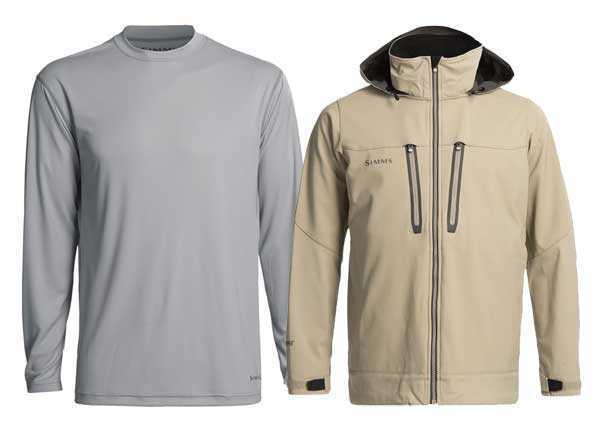Winter is my favorite time to fish. Something about the serenity that one experiences on those cold days where you may not see another boat for hours. I remember vividly the trophy fish that I’ve caught on calm, foggy, or drizzly days and how they erupted on surface plugs feeding aggressively during the pre-frontal calm; those experiences burn deep into memory banks.
Fishing in winter means you’ve done the preparation ahead of time and you know how to handle your vessel. Experience tells you that you dress in layers of quality, warm materials that wick moisture and keep you warm even if you get wet. Top that off with outer shells that shed water and cut wind and you’ve got a winning strategy for fishing comfortably during colder months. In December and January, this is needed anywhere from The Lower Languna Madre to Chesapeake Bay. Cold water temperatures, gray skies, and gusting wind can combine to catch you off your guard. You’ll have to be sure you pick your winter fishing apparel well.
Starting with the layer closest to the skin, find a thin, wicking, insulated material that is form fitting but not tight. Keeping the material close to, and touching the skin will increase its ability to wick moisture away from the skin. Excellent materials are merino wool and high wick (treated) polyesters. If the fit is too tight it will reduce circulation and it is equally important to keep all the extremities warm and tending to matters of fishing. For this reason I try to stay away from sleeves with cuffs. Cuff-less sleeve ends allow you to layer without bunching or cutting off circulation. You want to be able to leave your hands out of your pockets and the only way that can be achieved is by getting full circulation.
Slightly thicker layers of either fleece or wool make good mid and top layers and hold warm air close to the body. Mid layers can be form fitting or just slightly loose—but not too loose; cuts that aren’t designed to fit inside either waders or bib coverall shells begin to get bulky and tight, constricted by top and shell layers. Here again, keeping circulation unrestricted is essential. Top layers can be of wool or fleece and can either be worn with or without the shell. The number of layers will depend on how cold the air temperature is. I like to shoot for 3-4 layers. Too many layers, layers that are too thick, or improperly sized to work together will begin to cut off circulation.
As for outer layers, one cannot beat the water repellency and wick ability of Gore-Tex materials combined with nylon shells. Whether you are planning an all day trip in the boat or with waders, look for sealed seams like on many of the items in the Simms line of gear. Nothing is worse than dressing properly only to have your elbows and wrist get wet from leaky seams. You’ve gone to all this trouble, just as well do it right.
Keeping your feet warm and not feeling like 2×4’s on the end of you ankles can be a challenge on some days. The secret here again is keeping circulation maximized while controlling moisture and trapping warmth. One thin, wicking, liner sock, covered by a thick wool sock sized to be snug and not tight is the ticket. This is also where I see a lot of those new to the winter fishing stuffing their pant leg into their sock to keep the pant from riding up while inserting it in the bib or wader. This is a recipe for cold, numb, feet. Stuffing the pant into the sock, even if done neatly, only cuts circulation due to tightness of the materials. Select under and mid layer pant garments that have stirrups so you don’t have to use the stuffing technique.
And, finally, take your time putting on waders and shoes taking care that materials are not tight in the toe or ankle regions. I find it essential to fully loosen your properly sized shoes and then walk around in them without lacing for ten to twenty yards. Pretend you need to put something in the boat prior to lacing; this one step alone will help your feet stay warm all day. Lace, and you’re good to go.
